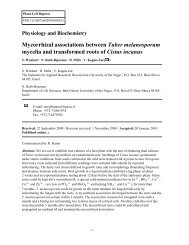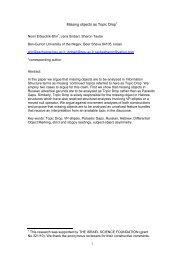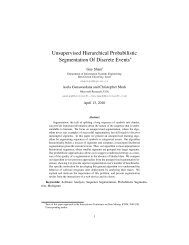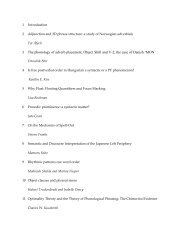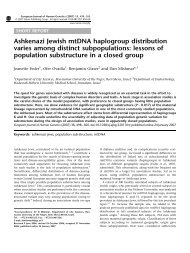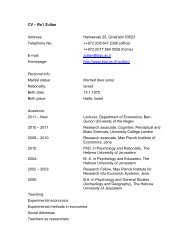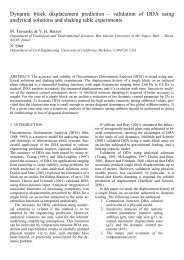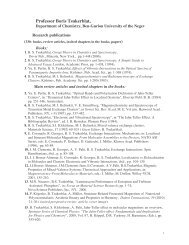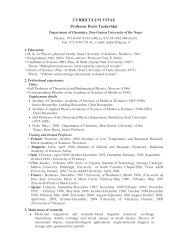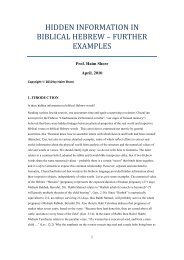Generics, Frequency Adverbs, and Probability
Generics, Frequency Adverbs, and Probability
Generics, Frequency Adverbs, and Probability
Create successful ePaper yourself
Turn your PDF publications into a flip-book with our unique Google optimized e-Paper software.
which satisfy ψ 1 <strong>and</strong> ψ 2 are equal. If generics <strong>and</strong> frequency adverbs behave<br />
extensionally, we would expect Q(ψ 1 , φ) <strong>and</strong> Q(ψ 2 , φ) to have the same truth<br />
conditions for every adverb Q <strong>and</strong> property φ.<br />
This does not hold in general. Consider (6), from Carlson (1989):<br />
(6) A computer (always) computes the daily weather forecast.<br />
Carlson observes that<br />
“the daily weather forecast” requires an intensional interpretation,<br />
where its meaning cannot be taken as rigidly referring to the present<br />
weather forecast, e.g. the one appearing in today’s copy of the Times<br />
predicting light rain <strong>and</strong> highs in the upper thirties (p. 179, emphasis<br />
added).<br />
For example, if today’s weather forecast predicts a blizzard, this may well<br />
be the main news item. Yet, (6) does not entail (7):<br />
(7) A computer (always) computes the main news item.<br />
While a computer may have computed today something which turned out<br />
to be the main news item, this does not hold in general; on most days, the<br />
main news item will not be computed by a computer, hence (7) is false.<br />
Intensionality, it is important to note, does not come in one form only. In<br />
particular, a construction may exhibit intensionality with respect to the time<br />
index, but not with respect to possible worlds, or vice versa. For example,<br />
L<strong>and</strong>man (1989), in his discussion of groups, draws the following distinction:<br />
6




